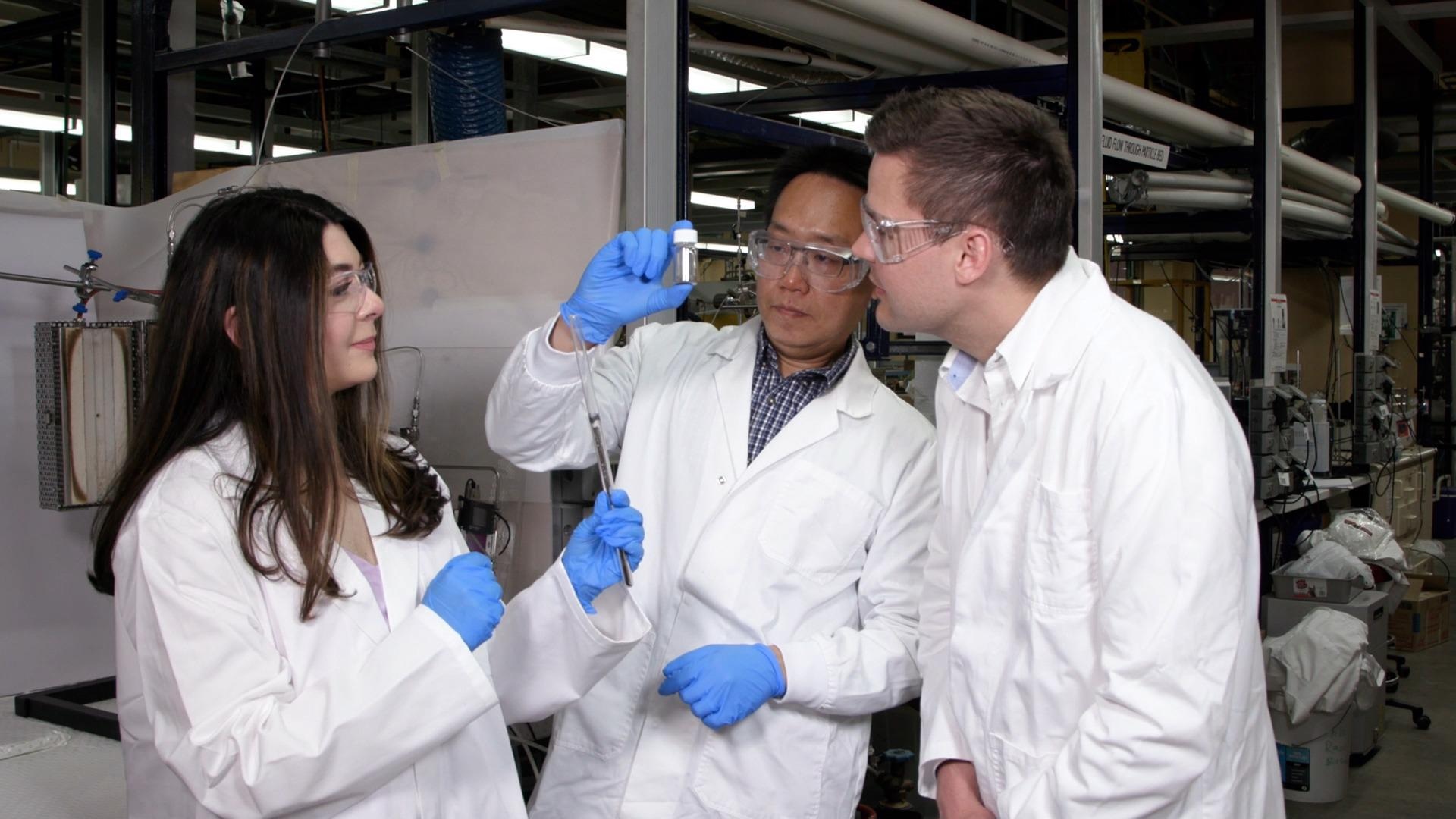AZoCleantech speaks to Dr. Ken Chiang from RMIT University in Melbourne, Australia. Chiang explains how his team instantly converted CO2 into a solid in a ground-breaking study.
What can you tell us about your research?
My research focuses on finding new ways to reuse CO2 through the chemical valorization of carbon dioxide produced from different sources. I have been doing this since 2007.
Can you tell us about your most recent research on capturing carbon and converting it to solid carbon?
Many of my CO2 conversion studies were performed when I was working as a Research Scientist at CSIRO (2007-2016). That laid the foundation of my current research at RMIT. My research now covers the thermal catalytic and photocatalytic conversions of CO2. The former involves the conversion of CO2 into higher-value products such as chemicals and synthetic fuel. Within this domain, I have been looking at unconventional ways of decomposition such as the use of liquid metals to convert CO2 into chemicals, fuels, and high-grade carbon.

PhD researcher Karma Zuraiqi with the experimental technology, designed for smooth integration into standard industrial processes. Credit: RMIT University
How does your carbon dioxide utilization technology smoothly integrate into existing industrial processes?
Our CO2 conversion technology involves contacting gaseous CO2 with a metal alloy in its liquid form under certain conditions i.e. atmospheric pressure with a temperature at or above 100 ◦C. If we look at the chemical industry, gas-liquid contacting processes such as this are well-established and are operated at a large scale. With modifications that aim to handle liquid metal alloys, we could repurpose this type of equipment to suit our process. This would speed up the scale-up and process integration process.
What is the current extent of carbon emissions in heavy industries?
According to the US EPA, Emissions in 2019 were 6,558 million metric tons of CO2 equivalent. Globally, the production of concrete and cement makes up 8% of total global carbon dioxide emissions.
What are the challenges currently faced by this industry in terms of decarbonization?
There are many. From a researcher’s perspective, the industry certainly needs new technologies and options to help them to combat emissions and decarbonize their processes. Universities are powerhouses for generating new ideas and innovations to address industry problems. There might be technologies that appear to be experimental and high-risk today but with proper university-industry collaborations, we can de-risk these processes for future applications.
How will your team’s technology help advance heavy industry decarbonization?
Our technology is no silver bullet and I always believe we need a suite of similar technologies to work together to address this grand challenge. Each industry partner’s problem is different from another’s and we need to understand their particular challenge and identify the possible pathways.
Liquid metal instantly converts CO2 to solid carbon | RMIT University
Video Credit: RMIT University/YouTube.com
What are the limitations of compressing carbon dioxide into a liquid and injecting it underground, as is the case in conventional carbon capture and storage solutions?
Technologies for carbon capture and storage (CCS) have largely focused on compressing the gas into a liquid and injecting it underground. This physical process transfers COs from one medium to another. Our approach chemically converts CO2 into solid carbon and offers a sustainable alternative, with the aim of both preventing CO2 emissions and delivering value-added reutilization of carbon. Turning CO2 into a solid avoids potential issues of leakage and locks it away securely and indefinitely.
How does your technology instantly convert carbon dioxide into a solid state? Has this been possible before now?
The thermal chemistry methods involved in this technology are widely used by industry, but our specific approach is the first of its kind.
The “bubble column” method starts with liquid metal being heated to about 100-120 °C. Carbon dioxide is injected into the liquid metal, with the gas bubbles rising up just like bubbles in a champagne glass.
As the bubbles move through the liquid metal, the gas molecule splits up to form flakes of solid carbon, with the reaction taking just a split second. It is the extraordinary speed of the chemical reaction we have achieved that makes our technology commercially viable, where so many alternative approaches have struggled.

Left to right: PhD researcher Karma Zuraiqi with Dr Ken Chiang and Associate Professor Torben Daeneke. Credit: RMIT University
What challenges did your team face when researching carbon dioxide conversion and how were they overcome?
Since converting CO2 is an energy uphill process, a major focus of our research program is to further reduce the energy requirement and thus the carbon footprint of our technology.
Is there a potential for this to be adopted throughout the world?
Yes, our technology has been designed for easy integration into industrial processes, so has widespread potential. We are keen to hear from other companies to understand the challenges in difficult-to-decarbonize industries and identify other potential applications of the technology.
What does the future look like for decarbonization and carbon capture and storage?
We hope our technology could be a significant new tool in the push towards decarbonization, to help industries and governments deliver on their climate commitments and bring us radically closer to net-zero. With so many dedicated scientists and engineers worldwide working on this challenge, there is great scope for the emergence of smart, practical solutions that can make a significant impact.
What further research and solutions are needed to accelerate the sustainable industrial revolution and the zero-carbon economy?
To accelerate the sustainable industrial revolution and the zero-carbon economy, we need smart technical solutions and effective research-industry collaborations.
Do you have any further research you are able to discuss?
The next stage in our research is scaling up our proof-of-concept to a modularized prototype the size of a shipping container, in collaboration with industry partner ABR.
Where can readers find more information?
Journal publication: doi.org/10.1039/D1EE03283F
About Dr. Ken Chiang
 Dr. Ken Chiang has a background in Chemical Engineering and has over 20 years of experience in academic and industrial research. Throughout his research career, he has succeeded in securing over $6 million in government and industry funding to develop new research.
Dr. Ken Chiang has a background in Chemical Engineering and has over 20 years of experience in academic and industrial research. Throughout his research career, he has succeeded in securing over $6 million in government and industry funding to develop new research.
Prior to joining RMIT in 2016, he led a team at CSIRO to develop low-emission technologies. Projects Dr. Chiang has led include catalyst development, syngas production and conversion, gas-to-liquid technologies, greener/synthetic fuel production, alternative hydrogen generation, and new routes for CO2 utilization.
Disclaimer: The views expressed here are those of the interviewee and do not necessarily represent the views of AZoM.com Limited (T/A) AZoNetwork, the owner and operator of this website. This disclaimer forms part of the Terms and Conditions of use of this website.